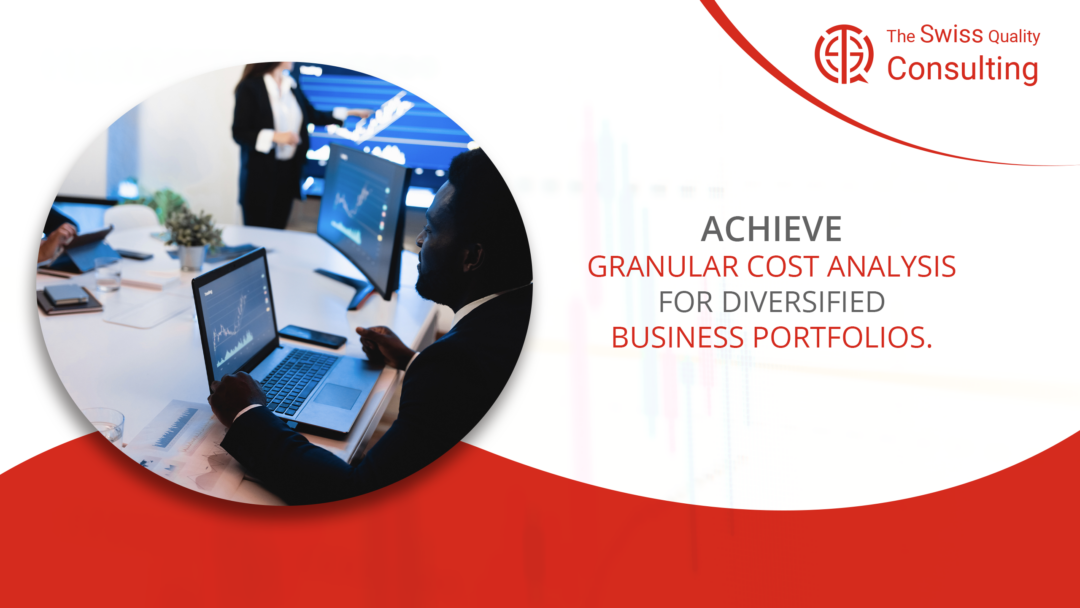Strategic Finance Unveiled: Navigating Granular Cost Analysis Across Diverse Business Portfolios
With constant growth and development in technological trends, mastering the art to achieve granular cost analysis for diversified business portfolios is crucial for sustained success. This blog delves into the strategies and tools necessary to achieve a comprehensive understanding of expenses, offering a roadmap to financial management excellence.
The Importance of Granular Cost Analysis
For businesses managing diversified portfolios, gaining insights into costs at a granular level is not just beneficial—it’s essential. Granular cost analysis involves breaking down expenses into specific components, allowing organizations to pinpoint areas of inefficiency, optimize spending, and make informed financial decisions.
At its core, granular cost analysis involves a detailed examination of various cost elements within a business portfolio. This includes not only direct costs related to products or services but also indirect costs such as overhead, administrative expenses, and operational costs.
Understanding these components provides a holistic view, enabling organizations to identify cost drivers and areas for improvement.
Best Ways to Achieve Granular Cost Analysis for Diversified Business Portfolios
1. Precision in Decision Making
By breaking down costs into granular details, organizations can make more precise and informed decisions. Whether it’s adjusting pricing strategies, reallocating resources, or identifying cost-saving opportunities, granularity in analysis empowers businesses to act strategically.
2. Resource Optimization
Granular cost analysis allows businesses to optimize their resources effectively. By understanding the specific costs associated with each aspect of the portfolio, organizations can allocate resources where they are most needed, ensuring maximum efficiency.
3. Identification of Profitable Segments
Not all segments of a diversified business portfolio contribute equally to the bottom line. Granular analysis helps identify the most profitable segments, enabling organizations to focus on and potentially expand those areas for greater financial success.
4. Improved Budgeting and Forecasting
Granular cost analysis provides the data needed for accurate budgeting and forecasting. Organizations can better predict future expenses, plan for contingencies, and set realistic financial goals based on a detailed understanding of their cost structure.
Implementing Granular Cost Analysis
1. Data Collection and Integration
Start by collecting data from various sources within the organization. This includes financial records, operational data, and other relevant information. Integrate this data to create a comprehensive dataset for analysis.
2. Utilizing Advanced Analytics Tools
Invest in advanced analytics tools that support granular cost analysis. These tools can handle large datasets, perform complex calculations, and generate meaningful insights. Choose tools that align with the specific needs and scale of your diversified business portfolio.
3. Training Teams for Effective Analysis
Ensure that teams involved in the analysis are well-trained. Understanding how to interpret granular cost data is crucial for making informed decisions. Training programs can enhance the analytical skills of your workforce.
4. Continuous Refinement and Adaptation
Granular cost analysis is an ongoing process. Regularly review and refine your analysis methods to adapt to changes in the business environment. This continuous improvement ensures that your cost analysis remains relevant and effective over time.
Challenges and Considerations To Achieve Granular Cost Analysis for Diversified Business Portfolios
While the benefits of granular cost analysis are significant, organizations must be aware of potential challenges:
1. Data Accuracy and Consistency
Ensuring the accuracy and consistency of data inputs is crucial. Inaccurate or inconsistent data can lead to flawed analysis and misguided decisions.
2. Integration with Business Processes
Integrating granular cost analysis into existing business processes may pose challenges. Organizations should carefully plan and execute this integration to minimize disruptions.
3. Resource Allocation for Technology
Investing in advanced analytics tools requires financial resources. Organizations should allocate budgets for technology infrastructure and tools to support effective granular cost analysis.
Achieve Granular Cost Analysis for Diversified Business Portfolios: A Strategic Outlook
As businesses continue to navigate complexities and market uncertainties, achieving granular cost analysis is set to become a cornerstone of financial management. The strategic use of data-driven insights will propel organizations towards sustainable growth and resilience in the face of evolving challenges.
Conclusion
In conclusion, the path to financial success for organizations with diversified business portfolios lies in achieving granular cost analysis. By understanding and optimizing costs at a detailed level, businesses can drive efficiency, make informed decisions, and navigate the intricacies of today’s competitive landscape with confidence.
#CostAnalysis #FinancialManagement #BusinessStrategy #DataDrivenInsights #Optimization #DiversifiedPortfolios









